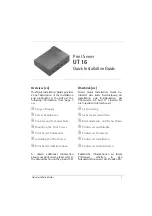
Memory Operating Mode
Description
Dell Fault Resilient Mode
The
Dell Fault Resilient Mode
if enabled, the BIOS creates an area
of memory that is fault resilient. This mode can be used by an OS
that supports the feature to load critical applications or enables the
OS kernel to maximize system availability.
Optimizer Mode
This mode supports Single Device Data Correction (SDDC) only for memory modules that use x4 device width. It does not impose any
specific slot population requirements.
•
Dual processor: Populate the slots in round robin sequence starting with processor 1.
NOTE:
Processor 1 and processor 2 population should match.
Table 39. Memory population rules
Processor
Configuration
Memory population
Memory population information
Single processor
Optimizer (Independent channel)
population order
1, 2, 3, 4, 5, 6, 7, 8, 9, 10
•
Populate in this order, odd amount
allowed.
•
Odd number of DIMM population
is allowed.
NOTE:
Odd number of
DIMMs will result in
unbalanced memory
configurations, which
in turn will result in
performance loss. It is
recommended to
populate all memory
channels identically
with identical DIMMs
for best performance.
•
Optimizer population order is not
traditional for 4 and 8 DIMM
installations of single processor.
– For 4 DIMMs: A1, A2, A4, A5
– For 8 DIMMs: A1, A2, A4, A5,
A7, A8, A9, A10
Mirror population order
{1, 2, 3, 4, 5, 6}
Mirroring is supported with 6 DIMM
slots per processor.
Single rank sparing population order 1, 2, 3, 4, 5, 6, 7, 8, 9, 10
Populate in this order, odd amount
allowed. Requires two ranks or more
per channel.
Multi rank sparing population order
1, 2, 3, 4, 5, 6, 7, 8, 9, 10
Populate in this order, odd amount
allowed. Requires three ranks or more
per channel.
Dual processor
(Populate round robin
starting with
processor1)
Optimized (Independent channel)
population order
A{1}, B{1}, A{2}, B{2}, A{3},
B{3}...
•
Odd amount of DIMM slots per
processor allowed.
•
Odd number of DIMM population
is allowed.
Installing and removing system components
105
















































